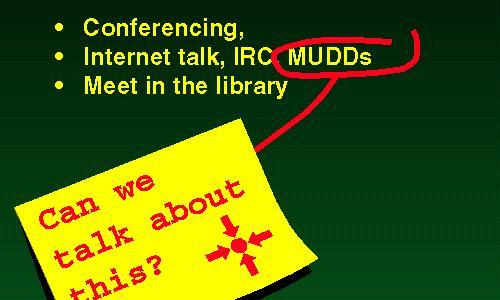
The images are available multiple formats. If you can't see them properly, see the diagnostics page.
on the need for a more collaborative space, with synchronous colboration and annotation

This is the classic picture of hypertext which used to be a part of talks in the days when we had to explain what hypertext is. The web is a set of nodes and links.
To a user, this has become an exciting world, but there is very little machine-readable information there. The meaning of the documents is clear to those with a grasp of (normally) English, and the significance of the links is only evident from the context around the anchor.
To a computer, then, the web is a flat, boring world devoid of meaning.
This is a pity, as in fact documents on the web describe real objects and imaginary concepts, and give particular relationships between them.
For example, a document might describe a person. The title document to a house describes a house and also the ownership relation with a person.
Adding semantics to the web involves two things: allowing documents which have information in machine-readable forms, and allowing links to be created with relationship values. Only when we have this extra level of semantics will we be able to use computer power to help us exploit the information to a greater extent than our own reading.
An important effect of developing security protocols on the web is the abstract space of web information is linked to reality. By taking verifiable responsibility for web statements, a party guarantees an isomorphism between the web and reality.
This means that machines, as well as operating on the web information, can do real things. For example, a program could search for a house and negotiate transfer of ownership of the house to a new owner. The land registry guarantees that the title actually represents reality.
![]() licenced with attribution:
[Tim Berners-Lee
1994, http://www.w3.org/Talks/WWW94Tim/]
licenced with attribution:
[Tim Berners-Lee
1994, http://www.w3.org/Talks/WWW94Tim/]